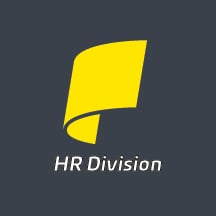Today's workplaces are filled with four working generations, each with unique needs that influence the benefits they value. Here's what employers need to know about creating an inclusive benefits program.
Understanding the Generational Landscape
Given the high cost of losing an employee, retention remains a top priority for most businesses. And for good reason. In 2022, a record 50.5 million people quit their jobs, and 75% plan to find new work this year.
According to a Forbes study, 40% of employers say workers leave their job to find employment that offers better benefits. While data shows that workers have one foot out the door, it also indicates the answer to keeping employees starts with providing more relevant benefits.
➡️➡️READ MORE: Are You an Employer of Choice?
Gone are the days when a one-size-fits-all benefits package worked for every employee. Today's workplaces are filled with four working generations, each with unique needs, priorities, and expectations that influence their perceptions of work and the benefits they value.
Working Generations
 Baby Boomers (1940 - 1959). Looking ahead to retirement, baby boomers value access to benefits such as comprehensive health insurance and supplementary health benefits, life insurance, employer match for 401(k) plans, health, wellness, and financial counseling. Baby boomers also value professional expertise and prefer one-on-one meetings when discussing benefits.
Baby Boomers (1940 - 1959). Looking ahead to retirement, baby boomers value access to benefits such as comprehensive health insurance and supplementary health benefits, life insurance, employer match for 401(k) plans, health, wellness, and financial counseling. Baby boomers also value professional expertise and prefer one-on-one meetings when discussing benefits.
Gen X (1960 - 1979). Gen Xers are sandwiched between caregiving responsibilities for their parents while raising their children. Benefits that are convenient and support a work-life balance, such as flexible schedules, telecommuting options, and paid time off, are a priority. Since much of their pay is devoted to children, student loans, and college tuition, Gen X workers seek benefits such as childcare, student loan repayment assistance, matching contributions for retirement plans, and wellness programs. Gen X workers value information about benefits from their doctors, social forums, friends, and co-workers.
Millennials (1980 - 1994). The Millennial generation is currently the largest and fastest-growing generation in the workforce. They are also the least interested in benefits and would prefer to use the money spent on benefits to provide for themselves. This tech-savvy generation likes to research, purchase, and manage their benefits using digital tools. Millennials value work-life balance and seek employers who offer flexible work arrangements, remote work options, and unlimited paid time off.
 Gen Z (1995 - 2010). Gen Z workers are just entering the workforce and are concerned with job security and mental health due to the pandemic and economic uncertainty. Gen Z workers searches for truth, values individual expression, and a positive workplace. They are digital natives and seek immediate feedback, innovative technology and prefer to get information about benefits via texts and videos.
Gen Z (1995 - 2010). Gen Z workers are just entering the workforce and are concerned with job security and mental health due to the pandemic and economic uncertainty. Gen Z workers searches for truth, values individual expression, and a positive workplace. They are digital natives and seek immediate feedback, innovative technology and prefer to get information about benefits via texts and videos.
Benefits that appeal to Gen Zers include financial wellness benefits, opportunities for skill development and mentorship, tuition reimbursement, flexible paid time off, remote work options, and an Employee Assistance Program(EAP).
Designing an Inclusive Benefits Program
Here are a few benefits that appeal to all generations.
Comprehensive Health Plan. While workers of all ages value good health insurance, over 80% of employees 42 and older are looking for roles offering employer-covered healthcare.
Wellness Initiatives. Provide wellness programs encouraging healthy habits, such as yoga classes and gym memberships.
➡️➡️READ MORE: 4 Building Blocks of Holistic Benefits
Flexible Work Options. The desire for work-life balance is a universal concern, but how employees from different generations approach it varies. Studies show that younger workers often seek remote work options, while older workers prefer part-time work options. This flexibility promotes work-life balance and accommodates the diverse needs of employees at different life stages.
 Financial Wellness Support. Benefits like retirement plans, financial counseling services, and assistance with managing student loans are particularly valuable to baby boomers nearing retirement and Millennials faced with student loan debt.
Financial Wellness Support. Benefits like retirement plans, financial counseling services, and assistance with managing student loans are particularly valuable to baby boomers nearing retirement and Millennials faced with student loan debt.
Continuous Learning and Professional Development Opportunities. Invest in your employees' by offering opportunities for professional growth and skill development. Establish mentorship programs and provide access to online courses and workshops.
Family-Focused Benefits. Recognize the importance of family life for many employees. Provide parental leave, childcare assistance, elder care, and resources for managing work and family responsibilities.
➡️➡️READ MORE: Health Benefits Beyond Health Insurance
Retirement Planning. Baby boomers may be focused on retirement readiness, while younger generations are just beginning to consider long-term financial planning. Providing retirement benefits like 401(k) matching and financial counseling services can help employees at all life stages. Provide access to retirement planning tools and resources to help employees make informed decisions about their financial futures.
 Employee Assistance Program(EAP). An EAP provides services to help employees, family members, and dependents cope with personal issues that may affect their health, mental and emotional well-being, and job performance. Usually offered with an employer's health plan, EAP services are confidential and, in most cases, free. A few benefits include mental health services, professional counseling, and referrals.
Employee Assistance Program(EAP). An EAP provides services to help employees, family members, and dependents cope with personal issues that may affect their health, mental and emotional well-being, and job performance. Usually offered with an employer's health plan, EAP services are confidential and, in most cases, free. A few benefits include mental health services, professional counseling, and referrals.
Customizable Benefits Options. Offer a range of benefits packages with optional add-ons that employees can choose from based on their individual needs. This flexibility empowers each generation to tailor their benefits package to suit their preferences.
Regularly Review and Update Your Benefits Program
Review your benefits package regularly, as employees' needs change over time. Stay informed about industry trends and benchmark against competitors to ensure your offerings remain competitive and attractive to all generations. By benchmarking against industry standards and adopting innovative benefit programs, employers can gain a competitive edge in recruiting and retaining high-quality employees.
Benefits studies, such as Propel's 2023 Benefits Benchmark Report, can help employers see how their benefits program compares with other employers nationwide. This new report analyzes health plans offered by 20,000 companies in every state nationwide and shows how benefit offerings can vary. .png?width=970&height=150&name=PHR_2023BenefitsBenchmarkReport%20(970%20%C3%97%20150%20px).png)
Find Out What Employees Want
Investing in a well-rounded benefits package not only enhances employee satisfaction and loyalty but also strengthens your business's overall success and competitiveness. Find out what employees want. Engage employees in open conversations, and conduct focus groups and surveys to understand what benefits matter most to your employees. Involving your employees in the process demonstrates that their needs are valued.
⚠️Stay Compliant: When selecting your employee benefits, be sure to review the recommendations from the EEOC. While you can offer different benefits packages to different employees, you can't do so in a way that discriminates by gender, race, age, or other considerations.
Great Benefits Attract and Keep Great Workers
A great employee benefits package is one way to keep great employees and gives employers a competitive edge in attracting top talent. An IRS-certified PEO, like Propel HR, can help employers lower health plan costs and provide better benefits, such as top-rated health insurance plans and enterprise-level benefits similar to those offered at large corporations.
A PEO can also support recruitment, retention, and employee engagement, help identify underlying issues that may be causing employees to disengage, and develop strategies to reduce employee turnover.
If you need help finding the right benefit options for your small business, just give us a call at (800) 446-6567.
About Propel HR. Propel HR is an IRS-certified PEO that has been a leading provider of human resources and payroll solutions for more than 25 years. Propel partners with small to mid-sized businesses to manage payroll, employee benefits, compliance and risks, and other HR functions in a way that maximizes efficiency and reduces costs. Visit our new website at www.propelhr.com.










